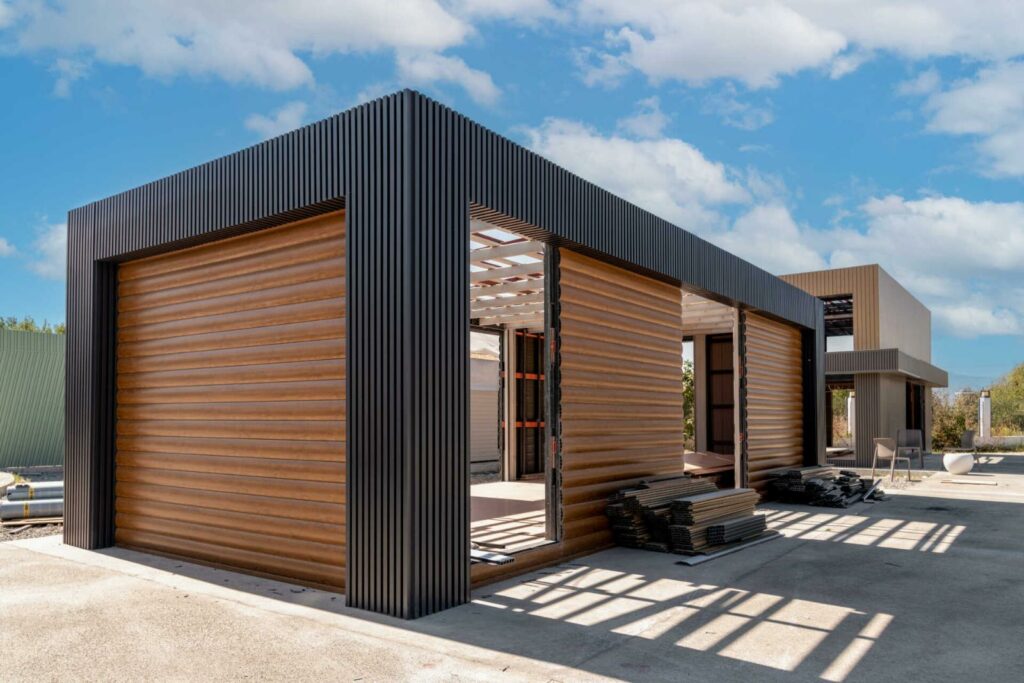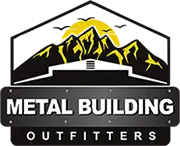
Contents
When considering durable and robust construction options, prefabricated steel structures stand out as a reliable choice. Imagine a warehouse in a busy industrial area that needs to withstand heavy loads and harsh weather conditions.
Prefabricated steel structures offer a multitude of benefits that set them apart from traditional building materials. From their remarkable resilience to environmental elements to their sustainable qualities, the advantages are numerous.
But what exactly makes them such a compelling option for those seeking strength and longevity in their construction projects?
Key Takeaways
- Quick assembly benefits and reduced construction time
- Durability and strength against extreme weather conditions
- Cost-effectiveness and long-term savings for owners
- Environmental resilience and safety features
Cost-Effective Construction Solutions
When considering cost-effective construction solutions, it’s essential to analyze the overall project budget and identify areas where efficiency can be maximized. Prefabricated steel structures offer quick assembly benefits and eco-friendly solutions, making them a top choice for sustainable design options and energy-efficient structures. By utilizing prefabricated steel components, construction time is significantly reduced, leading to cost savings in labor and overall project expenses.
The quick assembly benefits of prefabricated steel structures stem from the off-site manufacturing process, where components are fabricated in a controlled environment. This method allows for precise construction, minimizing errors and reducing on-site construction time. As a result, projects are completed faster, enabling you to meet tight deadlines and potentially save on labor costs.
In addition to quick assembly, prefabricated steel structures also provide eco-friendly solutions. Steel is one of the most recycled materials globally, making it a sustainable choice for construction. By opting for prefabricated steel components, you’re contributing to a more environmentally friendly building process. Furthermore, steel structures are durable and require minimal maintenance, reducing long-term costs associated with repairs and replacements.
Resilience to Harsh Environmental Conditions
When constructing prefabricated steel structures, you need to consider their resilience to harsh environmental conditions. Factors such as weather resistance, impact strength, and corrosion protection play crucial roles in ensuring the longevity and performance of these structures.
Understanding how these points interplay can help you make informed decisions to enhance the durability and strength of your steel buildings.
Weather Resistance
Engineers often utilize specialized coatings and treatments to protect the material from harsh environmental conditions to enhance the weather resistance of prefabricated steel structures. Rust prevention is a key consideration, as it helps maintain the structural integrity of the steel components over time, especially when exposed to extreme temperatures. These protective measures not only shield the steel from corrosion but also contribute to the durability and longevity of the structure. By incorporating advanced coating technologies and rust inhibitors, prefabricated steel buildings can withstand a wide range of weather conditions, making them a reliable choice for various applications. Below is a table highlighting some common methods used to enhance the weather resistance of prefabricated steel structures:
| Weather Resistance Methods | Description |
|---|---|
| Rust Inhibitors | Chemical compounds that prevent rust formation. |
| Weatherproof Coatings | Protective layers applied to shield against moisture and UV rays. |
| Thermal Insulation | Materials that regulate temperature to combat extreme heat or cold. |
| Galvanization | Coating process where steel is dipped in molten zinc to prevent corrosion. |
| Sealants | Applied to joints and gaps to prevent water infiltration. |
Impact Strength
Enhancing the resilience of prefabricated steel structures to harsh environmental conditions requires a focus on impact strength through strategic design and material selection. High durability is achieved by incorporating impact-resistant features that allow the structure to withstand external forces without compromising its integrity.
Prefabricated steel structures excel in impact strength due to their inherent properties and the ability to customize them according to specific project requirements. By leveraging advanced engineering techniques and selecting high-quality steel materials, these structures can effectively resist impact from various sources, ensuring long-term structural stability and performance in challenging environments.
Prioritizing impact resistance in the design and construction of prefabricated steel structures is essential for guaranteeing their ability to endure harsh conditions without sacrificing durability.
Corrosion Protection
Prioritizing the protection of prefabricated steel structures against corrosion in harsh environmental conditions necessitates a comprehensive approach that safeguards their longevity and structural integrity. Rust prevention is crucial for ensuring the steel durability of these structures.
To combat corrosion, various techniques are employed, such as applying protective coatings like galvanization or metal sprays that create a barrier between the steel and the corrosive elements in the environment. Regular inspections for signs of corrosion and prompt maintenance are also essential in preserving the integrity of prefabricated steel structures.
Superior Structural Integrity
With prefabricated steel structures, the focus lies on ensuring superior structural integrity to withstand various environmental conditions and loads. The use of steel in prefabricated structures provides exceptional strength and stability, ensuring long-lasting durability. Steel’s inherent properties make it an ideal choice for structures that need to endure harsh conditions while maintaining their form and function.
| Benefits of Superior Structural Integrity | Description | Emotional Response |
|---|---|---|
| Enhanced Safety | Steel structures offer robust protection against natural disasters such as earthquakes and hurricanes, ensuring your safety and peace of mind. | Security |
| Longevity | The durability of steel ensures that your structure will stand the test of time, providing a sense of permanence and reliability. | Trust |
| Customization | Prefabricated steel structures can be tailored to your specific needs, giving you a sense of ownership and belonging in your space. | Individuality |
Steel’s superior structural integrity not only guarantees the safety and longevity of your building but also offers a customizable solution that meets your unique requirements. By choosing prefabricated steel structures, you are investing in a durable and stable framework that provides security, trust, and a sense of individuality in your environment.
Reduced Maintenance Requirements
When considering prefabricated steel structures for reduced maintenance requirements, you’ll find that their longevity benefits stem from the material’s inherent durability and resistance to corrosion.
These structures offer cost-effective solutions by minimizing the need for frequent repairs and upkeep, resulting in long-term savings for the owner.
The reduced maintenance requirements of prefabricated steel structures make them a practical choice for sustainable and efficient construction projects.
Longevity Benefits
For enhanced structural integrity and reduced maintenance requirements over time, prefabricated steel structures offer a long-lasting solution. Prefabricated steel structures provide longevity benefits that make them a wise long-term investment for those seeking structural durability.
Here are some key points to consider:
- Minimal Maintenance: Steel structures require less maintenance compared to traditional building materials.
- Resilience to Environmental Factors: Steel is resistant to elements like fire, pests, and mold, ensuring longevity.
- Long Lifespan: Steel structures have a longer lifespan, reducing the need for frequent replacements or repairs.
- Cost-Effective: With reduced maintenance needs, the overall cost of ownership is lower, making it a cost-effective choice in the long run.
Cost-Effective Solutions
Opting for prefabricated steel structures results in lower maintenance requirements, ensuring a cost-effective solution for long-term structural durability. The installation efficiency of prefabricated steel buildings allows for quicker project timelines, reducing labor costs and minimizing disruptions to your daily operations. Moreover, the design versatility and material customization options available with steel structures ensure that you get a tailored solution that meets your specific needs without breaking the bank. By choosing prefabricated steel structures, you are not only investing in a durable and strong building but also in a cost-effective solution that requires minimal upkeep over time, offering you peace of mind and long-lasting value.
| Installation Efficiency | Design Versatility | Material Customization |
|---|---|---|
| Quick construction process | Various design options | Customized material choices |
Longevity and Extended Lifespan
To ensure the longevity and extended lifespan of prefabricated steel structures, meticulous maintenance routines must be implemented. By adhering to a strict maintenance schedule, you can significantly prolong the life of your steel structure.
Below are key factors that contribute to the durability and extended lifespan of prefabricated steel structures:
- High-Quality Construction Materials: Utilizing top-grade steel in the construction of prefabricated structures ensures superior strength and resilience against environmental factors.
- Robust Structural Design: Opting for a design that considers factors such as load distribution, wind resistance, and seismic activity enhances the structural integrity of the steel building.
- Regular Inspections and Repairs: Conducting routine inspections and addressing any issues promptly helps prevent minor problems from escalating and impacting the overall longevity of the structure.
- Protective Coatings and Finishes: Applying protective coatings and finishes to the steel surface safeguards it against corrosion, rust, and other forms of degradation, thereby prolonging its lifespan.
Resistance to Pests and Mold
Maintaining the structural integrity of prefabricated steel buildings through meticulous inspections and repairs is crucial for ensuring their resistance to pests and mold. Proper pest control measures and moisture prevention techniques are essential in safeguarding your steel structure against potential damage. By implementing proactive strategies, you can significantly reduce the risk of infestations and mold growth, prolonging the lifespan of your building.
When it comes to pest control, regularly inspecting the building for any signs of insect activity or rodent intrusion is paramount. Seal any gaps or openings that could serve as entry points for pests. Additionally, consider applying non-toxic pest deterrents around the perimeter of the structure to create a barrier against unwanted visitors.
Moisture prevention is equally important in mitigating mold growth within prefabricated steel buildings. Ensure proper ventilation throughout the structure to reduce humidity levels, as high moisture content can lead to mold formation. Utilizing moisture barriers and conducting routine checks for leaks or water infiltration can help maintain a dry environment within the building.
Benefits of Pest and Mold Resistance in Prefabricated Steel Structures:
| Benefits | Description | Impact |
|---|---|---|
| Pest Control | Effective measures to prevent pest infestations and protect the building | Minimizes structural damage and health hazards |
| Moisture Prevention | Techniques to reduce moisture levels and inhibit mold growth | Preserves indoor air quality and building integrity |
| Longevity | Increased lifespan of the steel structure through pest and mold resistance | Cost-effective maintenance and sustainability |
Enhanced Seismic Performance
Enhancing the seismic performance of prefabricated steel structures requires strategic reinforcement and design considerations to withstand dynamic forces during earthquakes. When it comes to ensuring the stability of structures in seismic events, the following key aspects are crucial:
- Seismic Performance: Prefabricated steel structures are inherently more resilient to seismic activity compared to traditional construction materials due to the inherent strength and flexibility of steel.
- Structural Design: The design of prefabricated steel structures for enhanced seismic performance involves meticulous planning to ensure that the building can dissipate seismic energy effectively.
- Connection Details: Properly designed connections between steel components play a vital role in the overall seismic performance of the structure, as they help distribute forces and minimize localized damage.
- Foundation Design: The foundation of prefabricated steel structures must be specifically engineered to account for seismic forces, ensuring that the entire structure remains stable during and after an earthquake.
Sustainable Building Practices
Implementing sustainable building practices in prefabricated steel structures is essential for minimizing environmental impact and maximizing long-term efficiency. By incorporating renewable materials and focusing on energy efficiency, prefabricated steel structures can significantly reduce their carbon footprint and overall environmental harm.
Using renewable materials such as bamboo, recycled steel, and reclaimed wood in the construction of prefabricated steel structures not only decreases the demand for new resources but also helps in the reduction of waste. These materials can be sourced sustainably, ensuring that the environmental impact is minimized throughout the lifespan of the building.
Furthermore, energy efficiency plays a crucial role in sustainable building practices. Prefabricated steel structures can be designed with energy-efficient features such as high-quality insulation, energy-efficient windows, and efficient heating, ventilation, and air conditioning (HVAC) systems. These features help reduce energy consumption, lower utility costs, and decrease greenhouse gas emissions.
Summary
Prefabricated steel structures offer a cost-effective, durable, and strong construction solution for various building projects. With their resilience to harsh environmental conditions, superior structural integrity, reduced maintenance requirements, and longevity, these structures provide long-term benefits.
Additionally, their resistance to pests and mold, enhanced seismic performance, and sustainable building practices make them a reliable choice for ensuring the longevity and strength of your building. Choose prefabricated steel structures for a solid and durable construction option.
Recent Posts
Efficient Construction of Large Metal Warehouses
When it comes to the optimization of building substantial metal storage facilities, one must consider
Why Choose Energy-Efficient Metal Warehouse Construction?
When it comes to selecting the construction method for your warehouse, choosing energy-saving metal construction
What Is the Key to Efficient Metal Warehouse Construction?
When it comes to efficient metal warehouse construction, understanding the key elements that drive success


